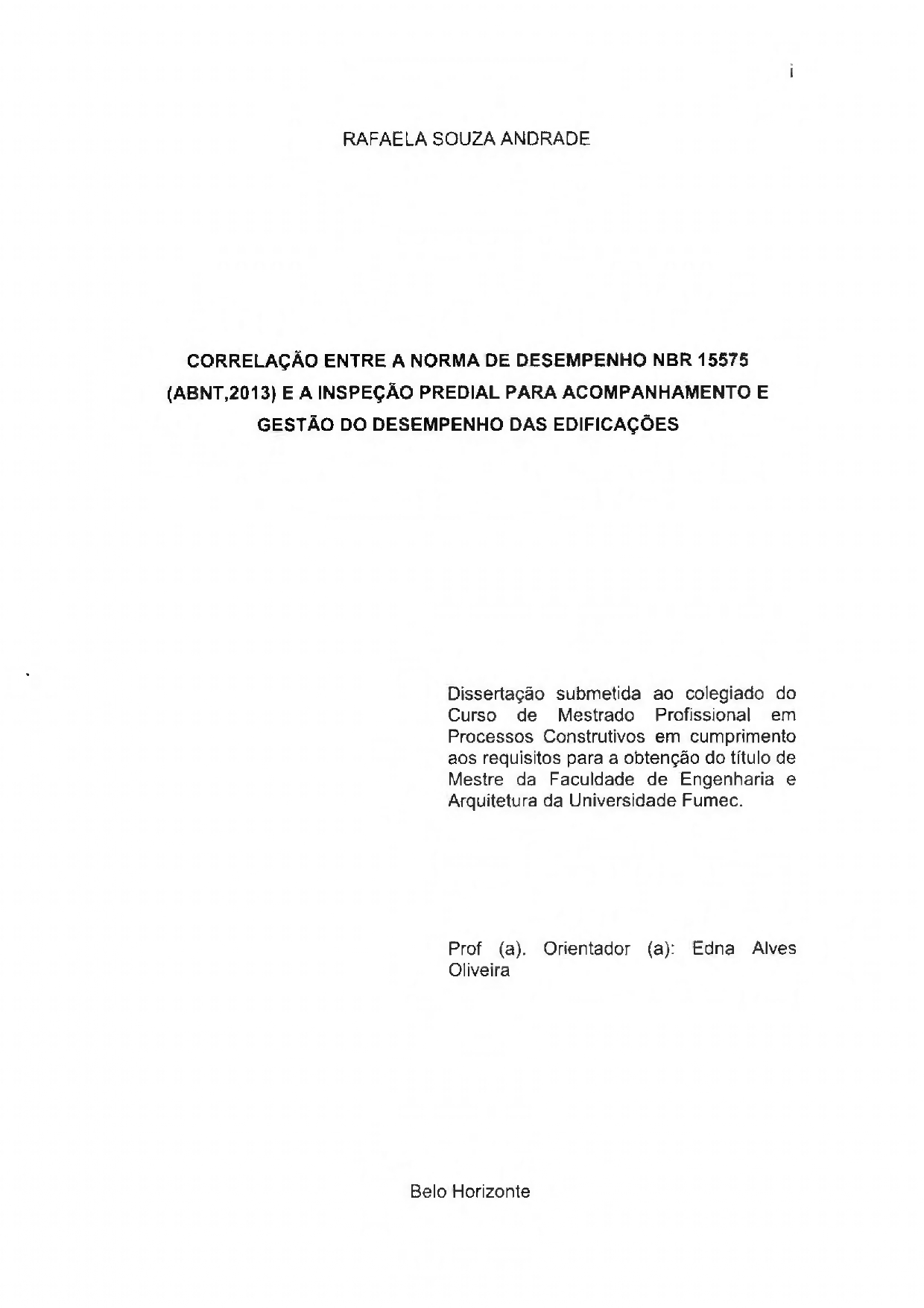Correlação entre a norma de desempenho NBR 15575 (ABNT,2013) e a inspeção predial para acompanhamento e gestão do desempenho das edificações

Visualizar/
Data
2019Autor
Andrade, Rafaela Souza
xmlui.mirage2.itemSummaryView.MetaData
Mostrar registro completoResumo
A inspeção predial está diretamente relacionada à aplicação da norma de desempenho, pois é uma atividade que objetiva a conservação das edificações. Para tanto, realiza-se o controle e acompanhamento das construções ao longo de sua vida útil, identificando os pontos críticos, deficiências e atividades de manutenção. Sendo assim, esta dissertação tem como objetivo estabelecer a correlação entre a Norma de Desempenho de Edificações Habitacionais – NBR 15575 (ABNT, 2013) e a inspeção predial, para que a segunda metodologia seja conhecida como meio de minimizar as manifestações patológicas que tendem a afetar o desempenho da edificação após construída e ao longo de sua vida útil. A metodologia utilizada para o desenvolvimento do presente trabalho foi fundamentada em estudos teóricos e estudos de casos. A fundamentação teórica baseou-se em pesquisa bibliográfica. O estudo de caso ocorreu por meio da análise de estruturas híbridas. Analisou-se um edifício comercial abandonado há mais de duas décadas, que passou por uma reforma para modificar seu uso e ocupação. Pela análise de um check-list, a inspeção predial após a reforma confirmou que as manifestações patológicas foram sanadas e que o edifício tornou-se regular ao uso proposto. É importante ressaltar que as rotinas de manutenção devem ser estabelecidas o mais breve possível para garantir a conservação do edifício e evitar a formação de novas anomalias ao longo do tempo. Portanto, conclui-se que, durante a construção de um empreendimento, é possível mensurar e garantir o desempenho dos sistemas construtivos por meio de ensaios não destrutivos. Porém, para garantir o desempenho adequado de toda a edificação, ao longo de sua vida útil, é necessário a implementação de um programa de inspeções prediais. Building inspection is directly related to the application of the performance standard, as it is an activity that aims at the conservation of buildings. To this aim, the control and monitoring of buildings is carried out throughout their useful life, identifying critical points, deficiencies and maintenance activities. Thus, this dissertation aims to establish the correlation between the Performance Standard of Housing Buildings - NBR 15575 (ABNT, 2013) with building inspection, so that the second methodology get turns to be known as a way to minimize the pathological manifestations that tend to affect the performance of the building after its construction and throughout its useful life. The methodology used for the development of this work was based on theoretical studies and case studies. The theoretical principle was based on bibliographic research. The case study was developed place through the analysis of hybrid structures. An abandoned commercial building for two decades, which underwent a renovation to modify its use and occupation, was analyzed. Upon review of a checklist, post-renovation building inspection it was confirmed that the pathological manifestations had been remedied and that the building had become regular to its intended use. Importantly, maintenance routines should be established as soon as possible to ensure the conservation of the building and to prevent the formation of new anomalies over time. Therefore, it is concluded that, during the construction of a project, it is possible to measure and guarantee the performance of construction systems through non-destructive tests. However, to ensure the proper performance of the entire building throughout its useful life, it is necessary to implement a program of building inspections.
